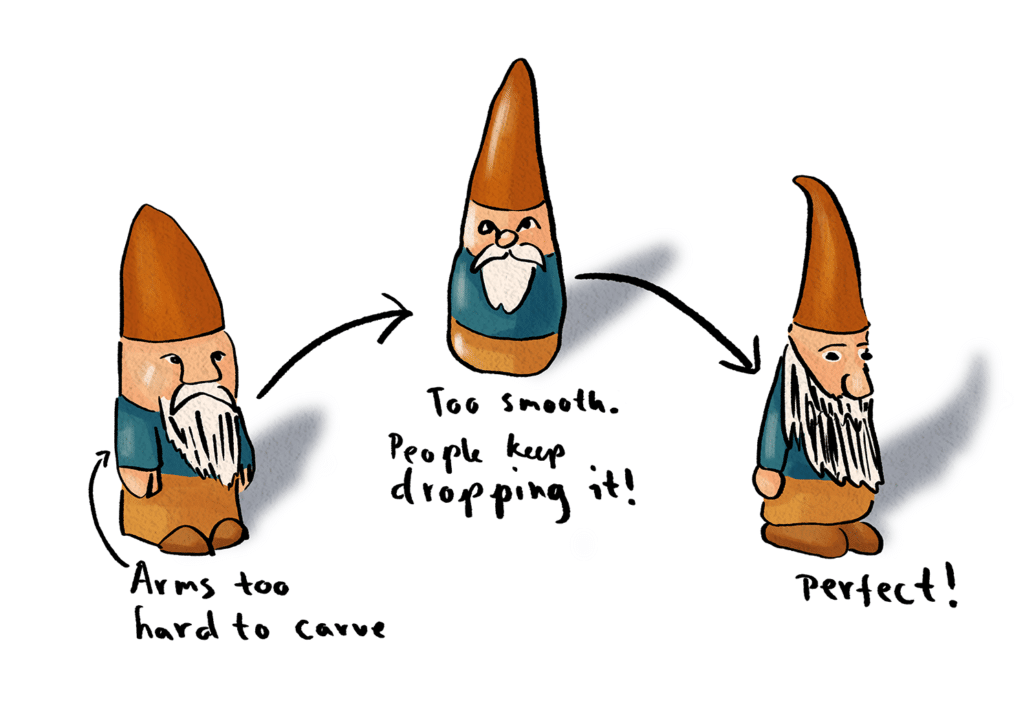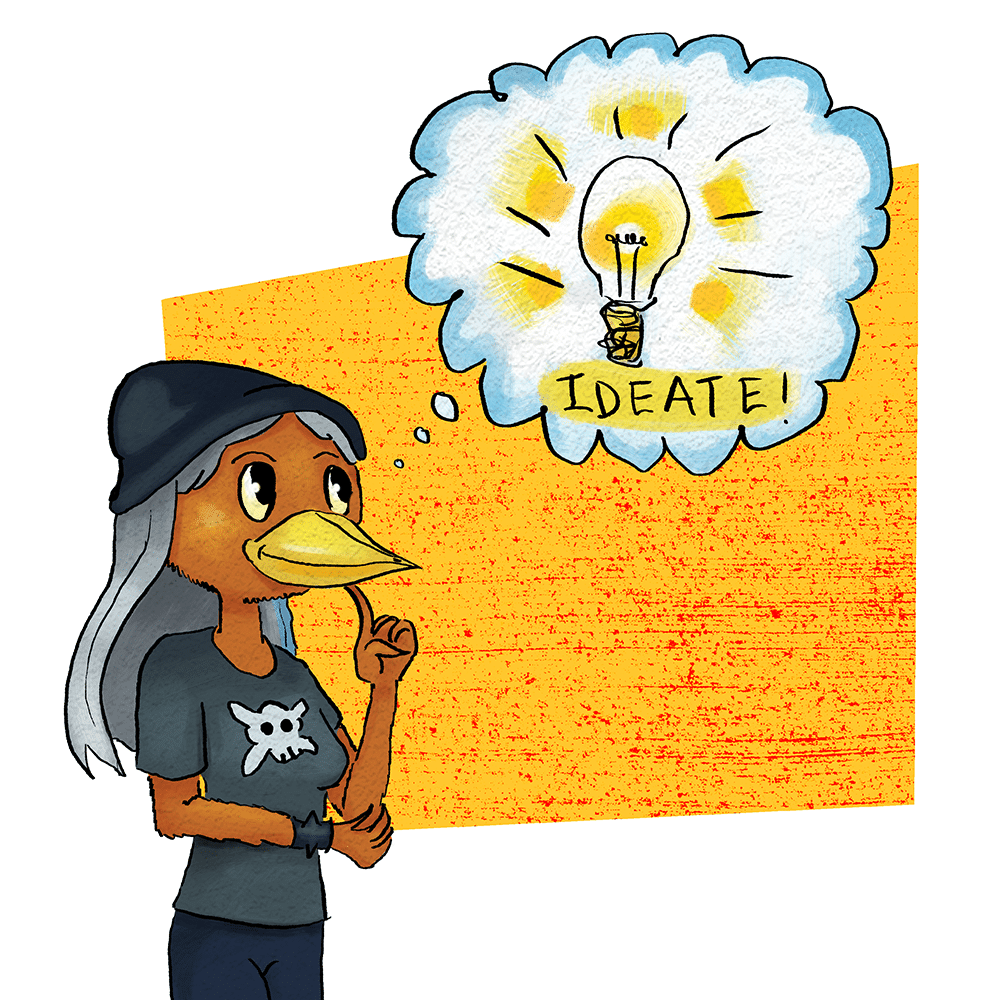
You’re excited to make a new product. You’ve followed the first few steps of the Design Thinking process. (If you haven’t? Start by reading the first and second) articles in this series to learn about those.)
Now it’s time for, in my opinion, the two most fun steps of the whole process: prototyping and testing!
Prototyping
A prototype, sometimes called a mockup, is a “rough draft” of your product. If you’ve been following along, you know that Rhonda’s product is a Secret Beer Mug. She wants to make something she can drink beer out of, that doesn’t LOOK like a beer mug. She also wants to make it out of wood, since that’s what her skill set is. Here are a few of the ideas she came up with:
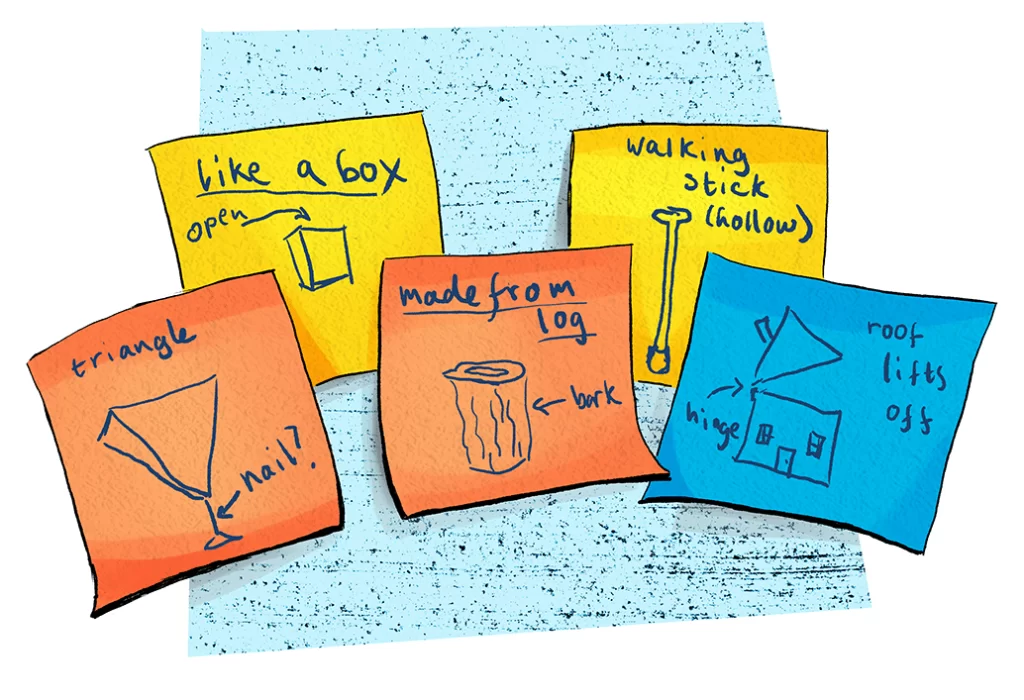
You will have chosen 2-3 of your best ideas as described in the last article. Now you’re going to think about what factors you’ll need to figure out for your product.
In Rhonda’s case, she needs to figure out water-tightness for both ideas. For the gnome she’ll also need to figure out whether a 3D carving tool will in fact be capable of making what she envisions.

Rhonda doesn’t have a 3D-carving tool in her garage workshop, so she visits a local Maker Space that has one. There she’s able to take a lesson on how to use the 3D carver. She also gets some advice from the instructor on what the machine is and isn’t capable of doing. Then she rents time on the machine and tests out some of the cuts she’ll need to make for the Gnome. Then she makes a mockup version of what she wants the gnome to look like.
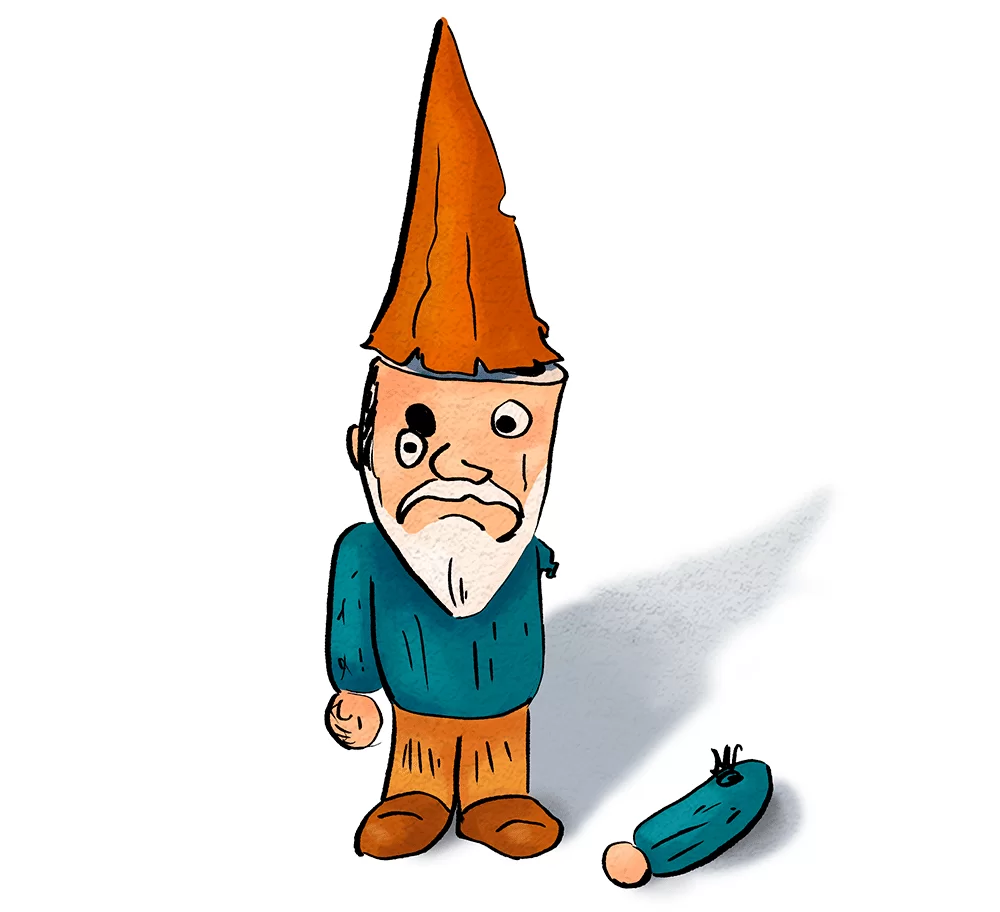
In that case, the “prototyping” and “testing” were really one step since the whole thing being tested was the feasibility of making the product using available technologies. But in other cases you’ll do the prototyping and testing as two separate steps.
Testing
There are many things you’ll want to test with your new product. How do various aspects of your design function, how useable is the product, do people seem interested in buying it, etc.
Rhonda needs to test how well her designs will hold beer, for example. So she makes mockup versions of the liquid-holding aspect of her two designs and designs a test to see how well they perform.
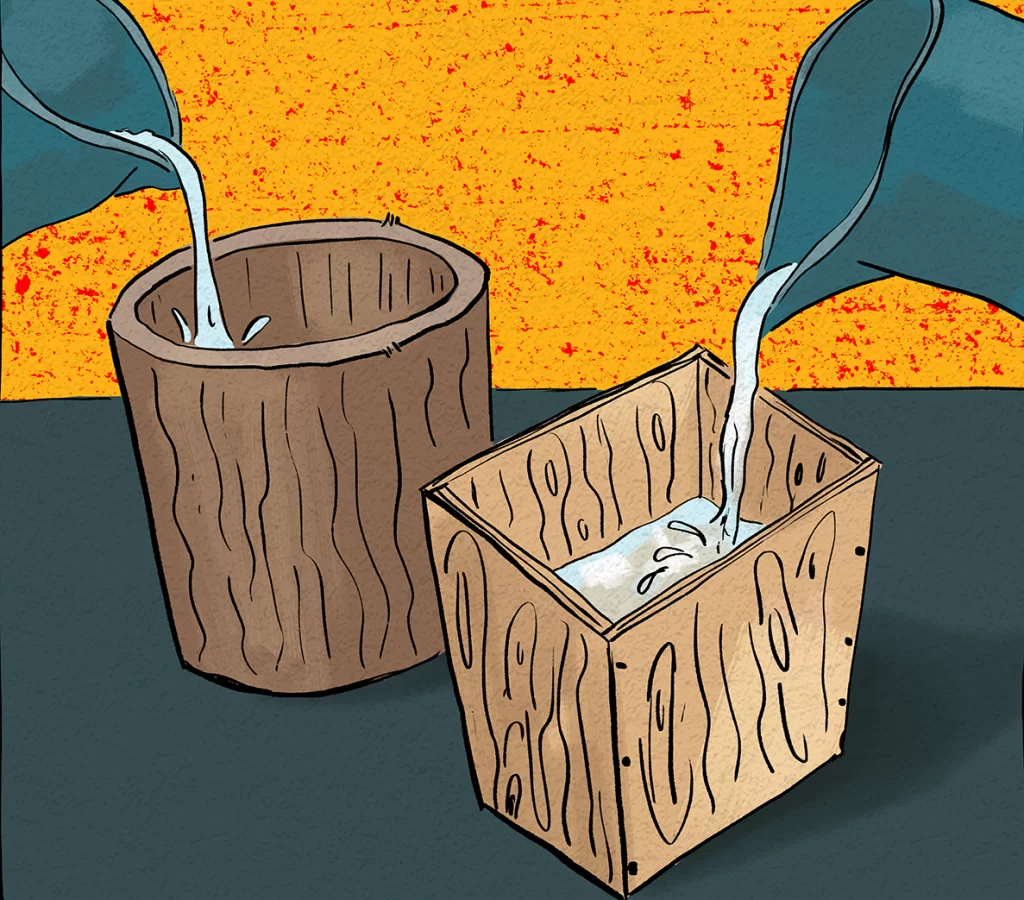
For the first test, Rhonda simply filled both prototypes with water to see how well they held it. She checked every 15 minutes for the first hour, then every hour for a few hours, and then left them overnight. And what she found will BLOW YOUR MIND!!!
Just kidding. She found that they both worked ok but one of them worked better than the other. Which is probably exactly what you would have guessed. Anyway, that brings us to the end of Prototyping and Testing. Come back next time to learn about Iteration!
Weekly Challenge:
Figure out what aspects of your product you’ll need to prototype, and get to it! Make your first prototype TODAY if you can.

